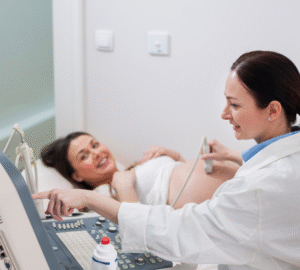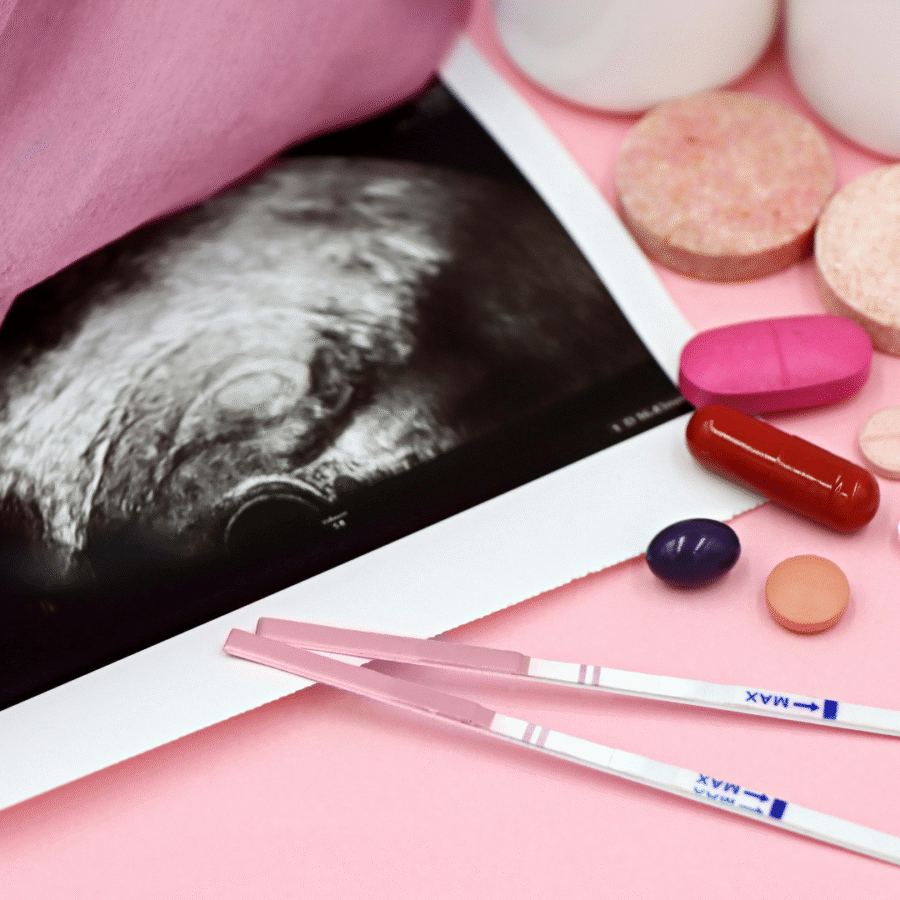Teenage years bring many changes—emotional, physical, hormonal—and among these is menstrual irregularity. At Karthika Woman & Childcare, we address irregular periods issues in teens with understanding and expertise. This post helps parents and teens differentiate between normal developmental fluctuations and concerning symptoms, offering guidance toward healthy menstruation habits.
1. What Are Irregular Periods?
Irregular periods issues refer to menstrual cycles that are unpredictable in timing, flow, or duration:
- Cycle lengths shorter than 21 days or longer than 35–38 days.
- Variations of more than 7–20 days from one cycle to the next.
- Heavy or prolonged bleeding lasting more than 7 days.
- Spotting between cycles.
For teens, irregular cycles are often part of puberty’s hormonal adjustments, particularly during the first two years after menarche.
1. What Are Irregular Periods?
2.1 Hormonal Immaturity (HPO Axis)
The hypothalamic-pituitary-ovarian axis takes time to stabilize. During this maturation phase, ovulation may not occur each cycle, leading to irregular periods.
2.2 Stress and Emotional Factors
Academic pressure, family dynamics, and social stress can disrupt hormone production and menstrual cycles. Up to 40% of young women with irregular cycles report high stress or insomnia.
2.3 Weight and Nutrition
Both underweight and overweight status can alter estrogen and progesterone balance. Sudden weight changes, poor nutrition, or eating disorders may all lead to irregular periods issues.
2.4 Excessive Exercise
Competitive athletics or intense physical training without adequate nutrition can trigger exercise-induced amenorrhea and disrupted hormonal cycles.
2.5 Medical Conditions (PCOS, Thyroid, etc.)
- Polycystic Ovary Syndrome (PCOS) is a frequent cause of irregular periods in teens, accompanied by weight gain, acne, and excess hair growth.
- Thyroid Disorders—both hypo- and hyperthyroidism—can also cause irregular menstruation.
Less commonly, conditions like endometriosis, uterine polyps, or structural anomalies may contribute.
3. When Is It “Normal” Vs. “Concerning”?
Normal Signs:
- Variability in cycle length during first 1–2 years post-menarche.
- Skipping a period occasionally.
- Short or light bleeding during some cycles.
According to health experts, most teens fall within 24–42 days variability for a few years without significant concern.
Concerning Signs:
Consider evaluating further if any of the following apply:
- Periods occur more often than every 21 days or less frequently than every 35–45 days.
- Bleeding lasts more than 7 days or blood flows through pads/tampons every hour.
- You experience severe menstrual pain, mood swings, extreme fatigue, or large clots.
- Signs of hormonal imbalance like facial hair, acne, weight gain.
Missing three or more consecutive cycles.
4. Managing Irregular Periods in Teens: Practical Strategies
4.1 Cycle Tracking
Use apps like Clue, Flo, or Period Tracker, or a paper journal to record start/end dates, bleeding, mood, and symptoms. This helps identify patterns and aids healthcare evaluation.
4.2 Stress Management
Encourage meditation, deep-breathing, journaling, hobbies, and consistent sleep (8–10 hours per night) to reduce cortisol levels and support hormonal balance.
4.3 Balanced Nutrition
A diet rich in iron, calcium, vitamin D, healthy fats, and B vitamins supports menstrual health. Avoid extreme dieting or calorie restriction.
4.4 Moderate Exercise
Encourage exercise like yoga, walking, swimming. Reserve high-intensity training for later, when nutrition and energy balance are stable.
4.5 Medical Evaluation
If irregular periods persist or present with concerning symptoms, evaluation may include:
- Detailed history & physical exam.
- Blood tests: hormone levels, thyroid profile.
- Pelvic ultrasound to check for cysts or structural issues.
- Endocrine evaluation if medical conditions (e.g. PCOS, thyroid) are suspected.
Treatment may include hormonal therapy (e.g. birth control pills), thyroid medication, or iron supplements, depending on the underlying cause.
5. Case Study: Post‐COVID Trends
A recent Indian study during the COVID‑19 second wave found nearly 29% of girls aged 16–24 experienced menstrual irregularity, with stress, insomnia, and PCOS as prominent risk factors.(pubmed.ncbi.nlm.nih.gov)
This underscores that acute stressors—even global health crises—can significantly affect adolescent menstrual health.
6. Summary Table: Regular vs Irregular Periods in Teens
Feature | Typically Normal | Concerning Signs |
Cycle length | 24–42 days with variability in early years | <21 or >35 days persistently |
Missed Periods | Occasional skips | ≥3 missed cycles or none for several months |
Bleeding Duration & Flow | 2–7 days; light to moderate | >7 days, soaking through pads every hour, large clots |
Pain / Symptoms | Mild cramps, bloating, mood swings | Severe cramps, fatigue, Iron‑deficiency symptoms |
Physical Signs | None significant | Acne, facial/body hair, weight gain |
Associated Health Conditions | Absent | PCOS, thyroid disorder, eating disorder |
7. How Karthika Woman & Childcare Can Help
At Karthika Woman & Childcare, we specialize in adolescent menstrual health and guiding families through irregular periods issues with sensitivity and clinical expertise:
- Confidential consultation tailored for teenagers.
- Hormonal and thyroid testing.
- Nutritional counselling and stress management support.
- Ultrasound imaging to evaluate for PCOS or structural concerns.
- Personalized treatment options: lifestyle plans, medications (when needed), or referrals.
- Workshops for parents and teens on menstrual health awareness.
8. Key Takeaways
- Irregular periods are common during adolescence—but it’s important to distinguish between normal developmental variability and signs of underlying issues.
- Stress, weight fluctuation, exercise, nutrition, and hormonal disorders are common contributors.
- Track cycles, maintain a balanced lifestyle, and consult a gynae if symptoms persist.
- Early detection and care can help teens maintain menstrual health and overall well‑being.
9. Reach Out: Karthika Woman & Childcare
At Karthika Woman & Childcare, we’re committed to supporting teenage girls and their families as they navigate menstrual health and growth. Our caring staff and specialists provide evidence‑based care tailored to individual needs.
Contact us today:
- 📞 Phone: +91 99728 99728
- 📍 Address: CloudnineThanisandra Bengaluru
Sahakaranagar Bengaluru
- 🌐 Website:https://karthikawomanandchildcare.in/
- 📧 Email: info@karthikawomanandchildcare.in
We offer flexible appointment slots and adolescent‑friendly consultation spaces. Book a visit to discuss irregular periods issues, menstrual concerns, or general adolescent health.
Conclusion
While irregular periods issues are often part of normal adolescent change, staying vigilant about warning signs can prevent longer‑term health concerns. At Karthika Woman & Childcare, we’re here to guide, educate, and treat—helping every young woman move confidently through this pivotal phase of life.




